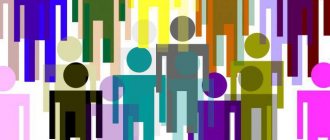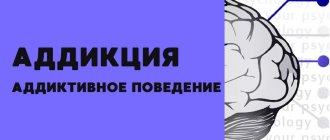Thinking is determined by a person’s needs, his interests, motives, tasks, goals, that is, a person’s thinking is purposeful in nature, associated with the needs and motivation of a particular individual.
A person’s individual thinking is directly related to his mind, but the concept of mind is broader: it includes features of both thinking and other cognitive processes. Thinking is the processing of information, a set of interconnected sensations, thoughts, and images. As a result, it gives us an idea of how everything in nature relates to each other. Thinking is a tool of the mind, one of its prerequisites. The mind is the repository of knowledge, intelligence, intuition, personality traits (its beliefs, positions, programs), it determines a person’s ability to think and solve emerging problems.
A person’s upbringing, his training, the chosen type of occupation, preferences, and the uniqueness of life constitute the features of the individual characteristics of a person’s thinking. Age, the type of higher nervous activity, and the ratio of the first and second signaling systems are also important. You can read more about types of thinking in our blog:
Mental activity unfolding in peculiar conditions is what kind of activity
PEDIC CAMPUS | ANSWERS TO TESTS | EXAMINATIONS | COURSES post pinned
“General psychology”
The correct answer is marked with a “/” symbol 1. What is the name of the method of collecting primary information by asking questions to respondents? voting\interview testing questionnaire
3. Mark the tasks of psychology: /analysis of the development of mental phenomena /promoting the systematic implementation of psychological knowledge into practice /qualitative study of psychological phenomena /study of certain physiological mechanisms of psychological phenomena
4. What does pathopsychology study? abnormal individual and socio-psychological phenomena, features of mental processes occurring in the human body during space flights, including the impact on the psyche of large physical overloads, disorders and disorders of mental activity in various diseases, promoting the development of rational methods for their treatment / features of mental disorders due to certain deficiencies in the structure and functions of the body
6. What is the name of incorrect transfer of a skill that impairs the performance of an activity and interferes with the formation of a new skill? /interference of skills diffusion of skills induction of skills differentiation of skills
7. Sensations that reflect the properties of objects and phenomena of the external environment are called: proprioceptive / exteroceptive interoreceptive external
8. Imagination based on what you read or hear has a name: passive imagination creative imagination/reproductive imagination active imagination
10. What is the name for the property of living, highly organized matter, which consists in the ability to reflect with its states the surrounding objective world in its connections and relationships, necessary for a person or animal to be active in it and control their behavior? psychotype / psyche psychology genetics
11. Which branch of psychology studies psychological phenomena and processes determined by a person’s belonging to specific communities? developmental psychology animal psychology/social psychology educational psychology
13. What is the name of the science of the patterns of mental search? psychoanalysis psychodiagnostics / heuristics psychoanalyst
14. Indicate the main provisions of the theory of reflection: /Personality and activity are in unity. Mental reflection is objective, since it depends on objective conditions. Mental reflection is a mirror, mechanical, passive copying of the world, it is associated with choice, search /Incoming information is subjected to specific processing in connection with needs and needs
15. What is the name of this type of research in which the researcher does not measure or observe the actual behavior of the subject, but analyzes a wide variety of products of his creativity? projective methodology / analysis of activity products testing questionnaires
16. What types of tests are distinguished by content? /personality tests /ability tests questionnaire tests /intelligence tests
17. What scientific direction studies the psychology of offenders and criminals, as well as issues reflected in judicial practice? medical psychology criminogenic psychology/legal psychology military psychology
18. Indicate the advantages of the experimental method: / natural behavior of the subject, uncertainty in time / the ability to control the research process, carrying out the procedure with a small number of subjects
19. Which temperament is characterized by high neuropsychic activity, variety and richness of facial expressions, emotionality, impressionability and lability? /sanguine phlegmatic choleric melancholic
Source
Areas and directions of activity research
Due to the fact that activity is inherent in all living things and is a method of adaptation and a condition for the reproduction of its various species, the topic of activity is very significant for many human sciences, including psychology.
The most clearly distinguished activities are: mental, cognitive; mental, intellectual, creative, cognitive, artistic, labor, behavioral, which, according to V.D. Nebylitsyn, “significantly depend on the level of excitation created in the frontal structures of the cortex by the ascending influences of the reticular formation of the midbrain.” V.L. Khaikin, in his work “Activity: Characteristics and Development,” summarized the available information on the main directions and areas of activity.
One of the most developed areas is mental activity . Research has put forward a number of important positions when comparing mental activity with the property of activation, that is, with the individual level of activation identified by E.A. Golubeva, which becomes of great importance in the knowledge of activity in its wide representation.
Activation is interpreted by E.A. Golubeva as “an unconditioned reflex balance of excitation and inhibition, expressed in the parameters of stable characteristics of different people according to the ratio of activating and inactivating influences in their encephalograms.” The characteristics of the individual activation level in the works of E.A. Golubeva and her colleagues use EEG indicators: alpha complex, harmonics and vertex potential amplitude. These indicators are considered as natural characteristics of individual people, determining their level of activation.
Revealing the neurophysiological prerequisites for activity, researchers (both E.A. Golubeva and N.S. Leites, A.I. Krupnoe, B.R. Kadyrov and V.D. Mozgovoy, I.M. Paley, V.M. Rusalov et al.) showed a complex relationship between natural features that determine the level of activation and mental activity. So, B.R. Kadyrov in his study identified a U-shaped relationship between them, explained by a conscious, developed orientation towards novelty in a group of low-activated individuals, which ensures that they reach the level of highly activated individuals who have a real craving for “diversity.” These conclusions, which reveal, in particular, the sources, ways of implementing and increasing activity, become important, because in general, numerous studies of mental activity have made it possible to present its structure, identify individual components and characteristics, and understand their interrelationship.
In almost any situation in human life, cognitive activity manifests itself. Cognitive activity has a connection with the most important psychological characteristics of human activity. This activity involves obtaining a cognitive result, which is experienced by a person as a feeling of satisfaction from receiving information, as a phenomenon of “insight” when solving a problem, accompanied by positive emotions, a feeling of satisfaction from the process itself and its result.
Lisina M.I., as a researcher of mental activity , believes that the central core of mental activity, which has a more limited scope than activity in general or mental activity, consists of cognitive functions and processes.
Types of thinking
Different types of thinking differ for different reasons:
In its form - demonstrative-functional, demonstrative-figurative, verbal-logical.
Depending on the nature of the problems being solved - practical and theoretical.
Depending on the degree of completeness - analytical, intuitive
In accordance with the content of the tools used - verbal (oral), non-verbal
According to the degree of novelty - reproductive, productive (creative).
Visual-actual thinking is used when solving problems using concrete objects. Its peculiarity lies in the fact that the thought process itself is a practical, transformative activity carried out by a person with real objects. In this case, the main condition for solving the problem is the correct action with the appropriate objects. It is typical for a young child (1-3 years old) and allows him to manipulate toys and other objects, learn about them, and understand their social purpose.
Visual-imaginative thinking works with images and ideas retrieved from memory or provided in the form of drawings, diagrams, plans. Solving problems is possible in the absence of the objects themselves through mental transformation of the situation.
Verbal-logical thinking (conceptual, abstract). In this case, objects and phenomena are described in terms of signs. Problem solving is carried out using logical operations and is expressed in the form of concepts. In this case, a person can completely move away from the data of sensory experience and rely only on existing knowledge, performing mental operations in the form of judgments and conclusions.
Practical thinking develops in people who tend to work with material objects, technical devices, instruments (the so-called manual intelligence).
Analytical thinking goes through logical thinking, and intuitive thinking goes directly, as a “clear vision” of a law or principle.
Verbal reasoning is characteristic of those who are good at symbolic and iconic tasks, but they are not very good at figurative tasks. When nonverbal thinking dominates, the picture is reversed.
In the case of reproductive thinking, people use ready-made means of solving problems, and in the absence of them they are forced to look for them themselves, which is typical for productive thinking.
However, almost all types of thinking use the same mental operations. Let's consider the operations of thinking.
Comparison is the basic operation of thinking, based on determining the similarities and differences between objects. It is a component of all mental processes. A person compares different types of feelings, the strength of emotions, various objects in accordance with certain attributes and properties.
Comparison allows us to distinguish between similarities or differences between objects, and from here is a step towards classification. This phenomenon usually occurs around the age of 2 years.
Classification. This comparison-based operation allows you to classify objects into groups that are similar in a certain attribute. Thus, this opens a direct path to the formation of classes of phenomena as the basis of concepts.
Analysis is the mental operation of decomposing a complex object into its components or characteristics. Imagination plays a role in this (as a rule, when analyzing pictures), but practical analysis (dissection) of material objects is no less important for thinking.
Synthesis is a thinking operation that combines elements into classes based on analysis and allows you to move from part to whole.
Abstraction is an operation based on filtering out the essential properties and connections of an object and distancing them from other, non-essential ones.
Generalization is a mental association of objects or phenomena in accordance with their general and essential characteristics. The child's first generalizations are inseparable from his practical activities: we see that the child performs the same actions with similar objects.
Specification is a mental operation that is the opposite of generalization. It consists in drawing, on the basis of a general concept, a judgment about the belonging of specific objects or phenomena to a certain class.
Systematization is the classification and subsequent unification of groups of objects or classes of phenomena that have a hierarchical structure (for example, taxonomy of animals and plants, chemical elements, etc.).
Analogy is a mental operation of searching for similarities in a specific relationship. Analogies (conclusions by analogy) are based on the formation and actualization of associations. Analogies are the basis for assumptions and hypotheses.
All operations of thought act as a single whole and cannot be artificially separated. However, the degree of expression of each of them may vary in a particular person, which is important for diagnosing the structure of thinking.








